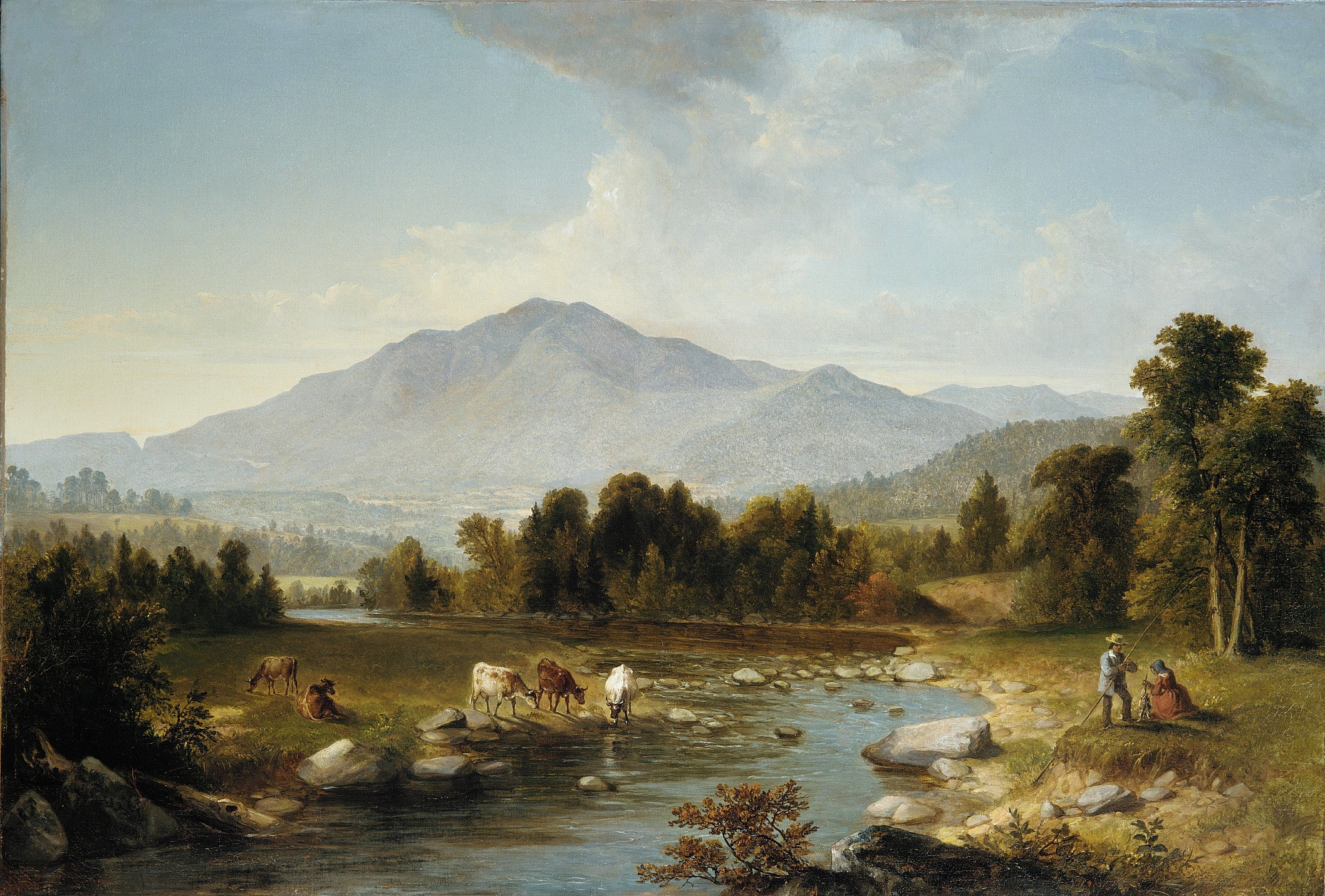
High Point: Shandaken Mountains
"In the Woods" debuted at the National Academy of Design’s annual exhibition in 1853, offering viewers a quiet yet richly evocative glimpse of the American countryside. The scene unfolds near the town of Olive, New York, nestled within the Catskill Mountains—an area that Asher B. Durand knew intimately from his summer stays in 1853 and 1855. The composition is grounded in a series of sketches he first made during an earlier visit in 1847, particularly of High Point, also known as Ashokan High Point, a distinctive mountain that reappears in several of his works.
Departing from the grand, sweeping scale and allegorical tone of his earlier “historical landscapes,” Durand here turns his attention to a more personal and immediate subject: the nuanced interplay of light and shadow in a secluded woodland glade. The painting reflects a growing trend in mid-19th century American art—a move toward naturalism and the celebration of tranquil, accessible rural spaces, which resonated with an increasingly urban public yearning for contact with the pastoral world.
At the heart of the composition, a man and woman sit quietly by a stream, fishing in the dappled light beneath a canopy of trees. Their presence, understated yet poignant, represents the human desire to reconnect with nature’s rhythms, to find peace and fulfillment in its quiet abundance. Rather than dominating the landscape, they are seamlessly integrated into it, becoming part of the forest’s serenity rather than separate from it.
Durand’s technical mastery is evident in the careful articulation of textures—the lacy foliage, the glinting water, the earthy path—and in his ability to convey a specific time of day, a fleeting moment of stillness. In this way, In the Woods becomes more than a simple pastoral scene: it is a meditation on harmony, a gentle reminder of the restorative power of nature in a rapidly industrializing world.
Choose options


High Point: Shandaken Mountains
About Artist

Asher Brown Durand
